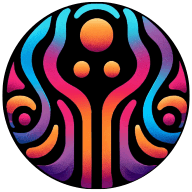Psychedelic substances have long been a topic of fascination and controversy. Their effects on the human mind are as profound as they are varied, leading to a wide range of experiences and interpretations. This blog post delves into the cultural impact of these substances, exploring their influence on art, spirituality, therapy, and societal norms.
Psychedelics and Artistic Expression
Psychedelic substances have had a significant influence on artistic expression, particularly in the realms of music and visual art. The 1960s counterculture movement, for instance, saw the rise of psychedelic rock, a genre characterized by extended instrumental solos, experimental sounds, and lyrics often inspired by hallucinogenic experiences.
Artists like Jimi Hendrix, The Grateful Dead, and The Beatles incorporated elements of their psychedelic experiences into their music, creating a soundscape that mirrored the mind-altering effects of these substances. Similarly, visual art also saw a surge in psychedelic influence, with vibrant colors, intricate patterns, and surreal imagery becoming hallmarks of the genre.
Psychedelic art aimed to replicate or evoke the altered states of consciousness experienced under the influence of these substances. Artists like Alex Grey, known for his intricate, anatomical designs, and Peter Max, with his vibrant, abstract pop art, have both cited psychedelics as a significant influence on their work.
Spirituality and Psychedelics
Psychedelic substances have also played a significant role in spiritual practices and religious experiences. Indigenous cultures have used these substances for centuries in religious rituals and healing ceremonies.
In the modern world, many individuals turn to psychedelics as a tool for spiritual exploration and personal growth. They report experiences of ego dissolution, unity with the universe, and profound insights into the nature of reality, which can lead to lasting changes in their worldview and sense of self.
Research into the spiritual effects of psychedelics has given rise to the field of "psychedelic therapy". This approach uses substances like psilocybin (the active ingredient in magic mushrooms) and LSD to facilitate deep emotional healing and spiritual growth.
Psychedelics and Therapy
The therapeutic potential of psychedelic substances is currently a hot topic in scientific research. Early studies in the 1950s and 60s suggested that psychedelics could be effective in treating a range of mental health conditions, including addiction, depression, and anxiety.
However, the cultural backlash against these substances led to a halt in research for several decades. It's only in recent years that scientists have begun to revisit the therapeutic potential of psychedelics, with promising results.
Modern studies suggest that psychedelics can facilitate profound emotional and psychological healing. They appear to help individuals confront and process difficult emotions, leading to significant improvements in mental health.
Psychedelics and Societal Norms
The cultural impact of psychedelic substances extends beyond the realms of art, spirituality, and therapy. They have also challenged societal norms and sparked significant social and political movements.
The counterculture movement of the 1960s, for instance, was closely tied to the use of psychedelic substances. These substances were seen as tools for rebellion against the status quo, leading to a cultural revolution that challenged traditional values and norms.
In more recent years, the growing interest in the therapeutic potential of psychedelics has led to a shift in societal attitudes towards these substances. There is a growing movement to decriminalize or even legalize certain psychedelics, reflecting a broader shift in our understanding and acceptance of these substances.
The Future of Psychedelics
The future of psychedelic substances remains uncertain, but their cultural impact is undeniable. As research continues to explore their therapeutic potential, we may see a shift in societal attitudes and policies towards these substances.
There is also a growing interest in the potential of psychedelics to facilitate personal growth and spiritual exploration. As our understanding of these substances deepens, they may become an increasingly accepted part of our cultural landscape.
However, it's important to remember that these substances are powerful tools that should be used responsibly. While they have the potential to facilitate profound healing and growth, they can also lead to challenging and even harmful experiences if not used with care.
Conclusion
The cultural impact of psychedelic substances is a complex and multifaceted topic. From their influence on art and music to their role in spiritual practices and therapeutic interventions, these substances have left an indelible mark on our culture.
As we continue to explore their potential, it's important to approach these substances with respect and caution. They offer a unique window into the human mind and have the potential to facilitate profound healing and growth. However, they also pose risks and challenges that should not be overlooked.
Psychedelics: A Cultural Catalyst
Psychedelic substances have undeniably shaped our culture in profound ways. They have influenced art, spirituality, therapy, and societal norms, and continue to spark debate and research. As we move forward, it's crucial to approach these powerful substances with respect, curiosity, and caution, recognizing their potential as well as their risks.

